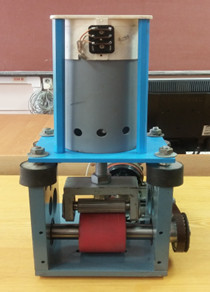STUDY OF EFFICIENCY OF ENDOWING ANTIMICROBIC PROPERTIES TO ELEMENTARIZED LINEN FIBERS
Abstract
The authors have carried out the comparison of antimicrobic activity of flax fibers obtained by different methods and doped with preparations of silver or quarternary ammonium salts. The elementarized flax fibers obtained by the method of recurring cyclic deforming loads, differ essentially from the known analogs (cottonized fibers) because of the almost full absence of mechanical impurities. An important feature of elementarized flax fiber is the developed capillary-porous surface, which is confirmed by its high sorption capacity. The average mass length linear density, content of fibers of the fluff group, content of flax shive and also the hygroscopicity indexes were determined by the standard methods of material science. The level of whiteness was measured with "JENA" leukometer by “Carl Zeiss”. The quantitative output of antiseptic preparations ("Poviargole" and "Chlorhexidine") on fibers was controlled by the spectrophotometry method with the use of the spectrophotometer "Agilent 8453". The antimicrobic activity of the studied flax fibers was determined by estimating the change in coefficients of light-transmission of the solutions (containing nutrient medium for microbic cultures) before and after putting the studied samples into them. It is ascertained that elementarized flax fibers suppress the growth of microflora of the test cultures E. coli, Staphylococcus aureus and yeast-like fungus Candida albicans more effectively, than the mechanically cleaned ones.
Downloads
Metrics
References
Zhivetin V.V., Ginzburg L.N., Ol'shanskaia O.M. Len i ego kompleksnoe ispol'zovanie. [Flax and its integrated use]. Moscow, 2002. 394 p. (in Russ.).
Galashina V.N., Moryganov P.A., Dymnikova N.S. Rossiiskii khimicheskii zhurnal, 2011, no. 3, pp. 28–34. (in Russ.).
Galashina V.N., Erokhina E.V. Rastvory v khimii i tekhnologii modifitsirovaniia polimernykh materialov: novoe v teorii i praktike. [Solutions in chemistry and technology for the modification of polymeric materials: new in theory and prac-tice]. Ivanovo, 2014, pp. 197–247. (in Russ.).
Moryganov A.P., Galashina V.N., Dymnikova N.S. Khimicheskie volokna, 2008, no. 3, pp. 51–55. (in Russ.).
Patent 2525781 (RU). 2014. (in Russ.).
Patent 2497982 (RU). 2013. (in Russ.).
Stokozenko V.G., Moryganov A.P., Larin I.Iu., Voronina E.R. Khimiya Rastitel'nogo Syr'ya, 2017, no. 2, pp. 143–148. (in Russ.).
Zavadskii A.E., Stokozenko V.G., Moryganov A.P., Larin I.Iu. Izvestiia vuzov. Khimiia i khimicheskaia tekhnologiia, 2017, vol. 60, no. 6, pp. 102–108. (in Russ.).
Spravochnik po khlopkopriadeniiu [Handbook of cotton spinning], ed. B.P. Shirokov. Moscow, 1985, 473 p. (in Russ.).
Kukin G.N., Solov'ev A.N., Kobliakov A.N. Tekstil'noe materialovedenie (volokna i niti): uchebnik dlia vuzov. [Textile Materials Science (Fibers and Filaments): A Textbook for Universities]. Moscow, 1989, 352 p. (in Russ.).
Galashina V.N., Moryganov P.A., Kuznetsov O.Iu. Izvestiia vuzov. Tekhnologiia tekstil'noi promyshlennosti, 2006, no. 2, pp. 65–67. (in Russ.).


This work is licensed under a Creative Commons Attribution 4.0 International License.
The authors, which are published in this journal, agree to the following conditions:
1. Authors retain the copyright to the work and transfer to the journal the right of the first publication along with the work, at the same time licensing it under the terms of the Creative Commons Attribution License, which allows others to distribute this work with the obligatory indication of the authorship of this work and a link to the original publication in this journal .
2. The authors retain the right to enter into separate, additional contractual agreements for the non-exclusive distribution of the version of the work published by this journal (for example, to place it in the university depository or to publish it in a book), with reference to the original publication in this journal.
3. Authors are allowed to post their work on the Internet (for example, in a university repository or on their personal website) before and during the review process of this journal, as this may lead to a productive discussion, as well as more links to this published work.











